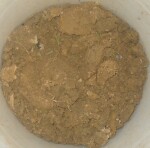
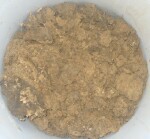
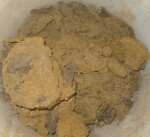
L. David Roper
http://www.roperld.com/personal/InterdisciplinaryStudies.htm
6 April, 2016
Perhaps a pervious parking lot would be the most environmental-friendly way to control storm water on the parking lot.
The more conventional, and perhaps less expensive, option to control rainwater runoff is a water-retention basin. With the use of rainwater for toilets, the necessary water-retention will be less.
It is important to know the ability of the soil under the parking lot to hold water. A 3' post hole was dug and the soil was characterized at 1' intervals:
0'-  |
1'-2'  |
2'-3'  |
The clay increases with depth going from a low of ~20% to as high as ~40%. It appears that the soil at the site
was probably disturbed in the past.
It is estimated that the 0'-1' layer will take ~0.3" of water to completely wet a 1" inch depth of initially dry soil.
Similarly it’l take ~0.4" to do the same for every inch of the 1'-3' ft depth. (Thus, the 0'-1' dry layer would absorb ~4" of rain and the total dry 0'-3' of soil would absorb ~13"of rain.) This is a total storage capacity estimate but it does not say anything about how long it’ll take for the soil to absorb this water. But given enough time, this implies that, when it is initially dry, the 0'-3' can take in about 12 inches of water before it becomes saturated. This is where your rate measurements will come in because whenever the surface absorption rate is
less than the rainfall rate the soil will shed the difference as runoff.
If the 0'-3' ft soil is initially saturated, about 25% of the water stored will drain out by gravity (i.e., about
a 0.1" of water per inch depth) This would be about the total load to the drainage line but again it says nothing about how fast this drainage will take place. After this gravity drainage is complete, about another 0.1" water per inch depth will be available for plants to transpire before they wilt permanently.
A percolation test was done on 6 July 2011 when the soil was saturated after a heavy rain in the past 24 hours and a light rain in the past 4 hours. A post hole was dug about 8"x3'. There was 4" of water at the bottom of the hole when the test started. The hole was filled with water and the water depth below the surface was measured versus time:
Time |
Water depth from surface |
9:43-9:48 |
7" |
9:48-9:53 |
9" |
9:53-9:58 |
10" |
9:58-10:03 |
10" |
10:03-10:08 |
11" |
10:08-10:13 |
11" |
13:34 |
14" |
19:15 |
17" |
After extensive study, the owner decided that Grasscrete may be a good option for making the driveway part of the parking lot pervious to water. See details about installing a Grasscrete parking lot for REA.
Another option for a pervious parking lot is porous concrete; it may be a good option for the parking spaces in the REA parking lot.
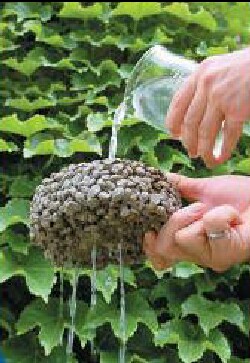 |
Pervious-concrete parking lot at Community Housing Partners in Christiansburg VA: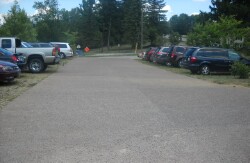 |
I would lean toward porous concrete; such has been done in the area by Chandler Concrete.
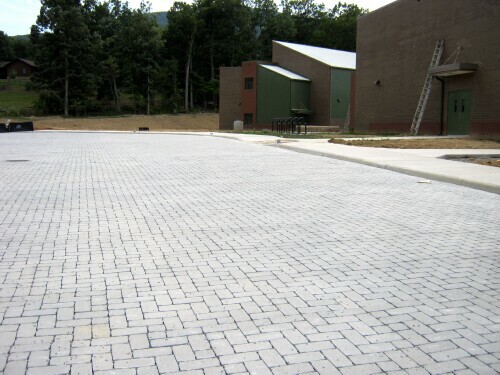 |
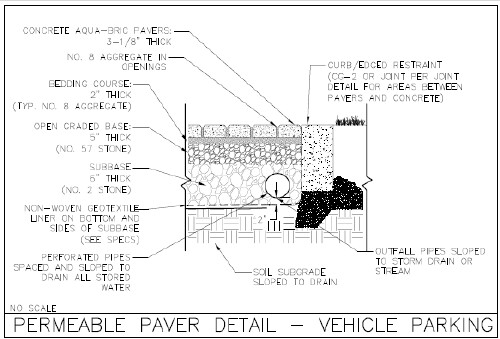 |
Another option for a pervious parking lot is porous asphalt; it may be a good option for the parking spaces in the REA parking lot. See details about installing a porous asphalt parking lot for REA.
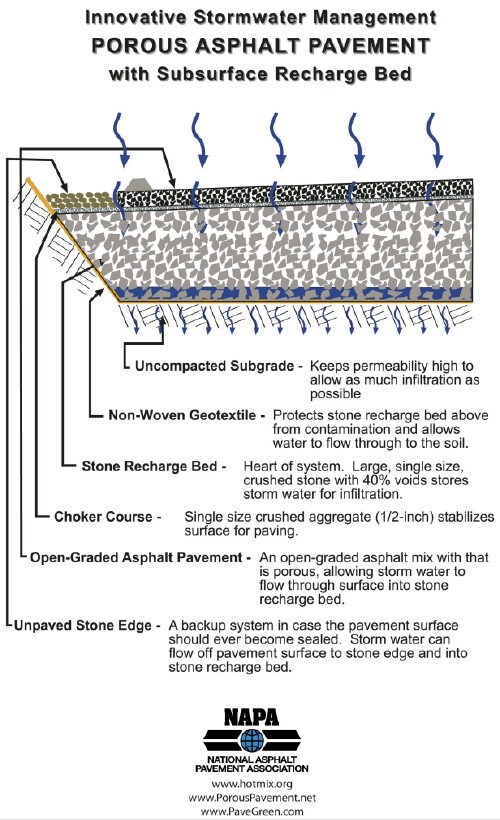 |
 |
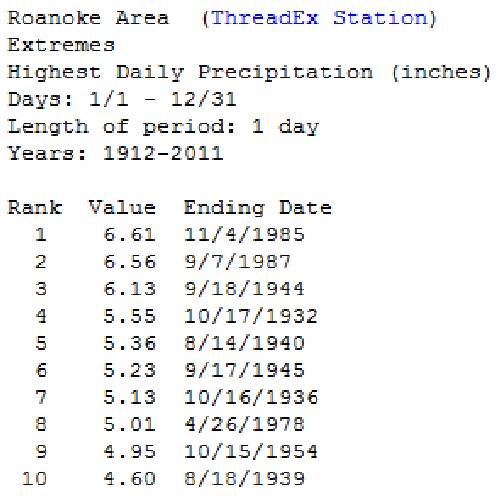 |
The last two lists and the likelihood of increased precipitation due to global warming and the need for healthy tree-root growth indicate that the stone-recharge bed should be ~30" in depth.
Cornell University has devised a "structural soil" to replace stone reservoir under porous pavement:
"CU-Structural Soil® (U.S. Patent # 5,849,069) is a two-part system comprised of a rigid stone “lattice” to meet
engineering requirements for a load-bearing soil, and a quantity of soil, to meet tree requirements for root
growth. The lattice of load-bearing stones provides stability as well as interconnected voids for root penetration, air and water movement (Fig. 1.11). The narrow graded 0.75”-1.5” angular crushed stone specified ed for CU-Structural Soil® is designed to ensure the greatest porosity. Crushed or angular stone compacts easily and has more pore space than round stone. Because stone is the load-bearing component of structural soil, the aggregates used should meet regional or state department of transportation standards for pavement base courses....Since among soil textures, clay has the most water and nutrient-holding capacity, a loam to clay loam, with a minimum of 20% clay, is selected as the soil component for the CU-Structural Soil® system. CU-Structural Soil® should also have organic matter content ranging from 2%-5% to ensure nutrient and water holding while encouraging beneficial microbial activity. A minimum of 20% clay is also essential for an adequate cation exchange capacity....CU Structural Soil® is a carefully chosen aggregate with the proper stone to soil ratio which creates a medium for healthy root growth that can also be compacted to meet engineers’ load-bearing specifications . The intention is to “suspend” the clay soil between the stones without over-filling the voids, which would compromise aeration and bearing capacity. CU-Structural Soil® utilizes Gelscape® hydrogel as a non-toxic, non-phytotoxic tackifier, in addition to stone and soil components to help adhere soil to the stone
creating a uniform mix."
Current leaning is toward a porous asphalt parking lot for REA for the following reasons:
Later (Dec 2011): I am now leaning toward normal asphalt for parking-lot lanes and pervious concrete with rock substrate for parking spaces, with the lanes slightly sloping toward the parking spaces for drainage.